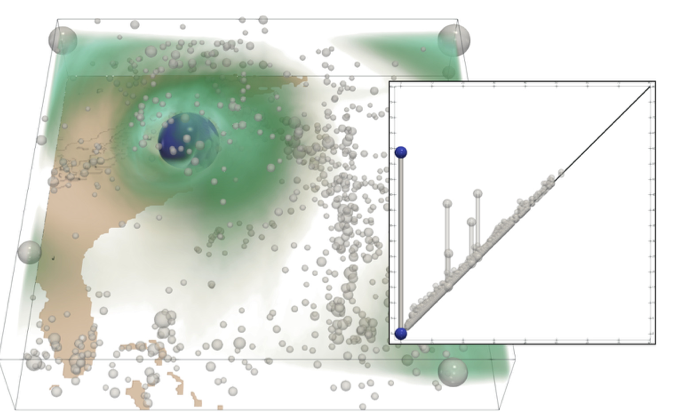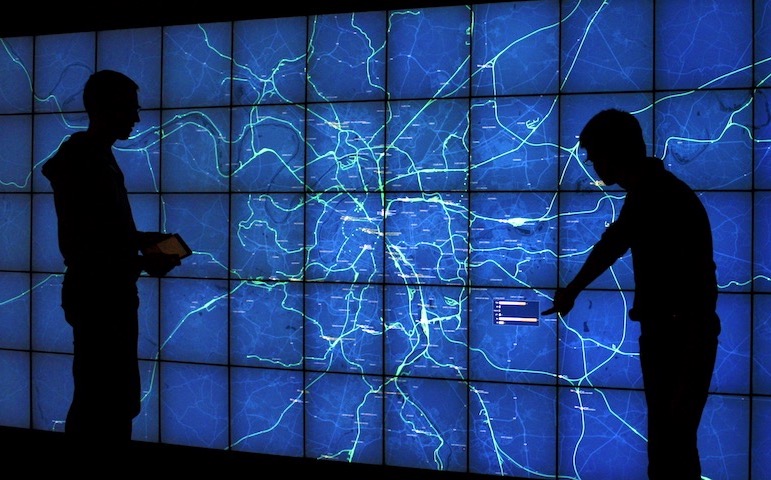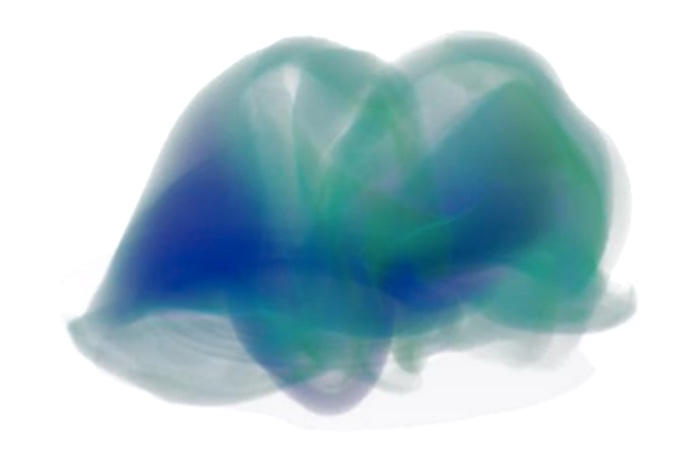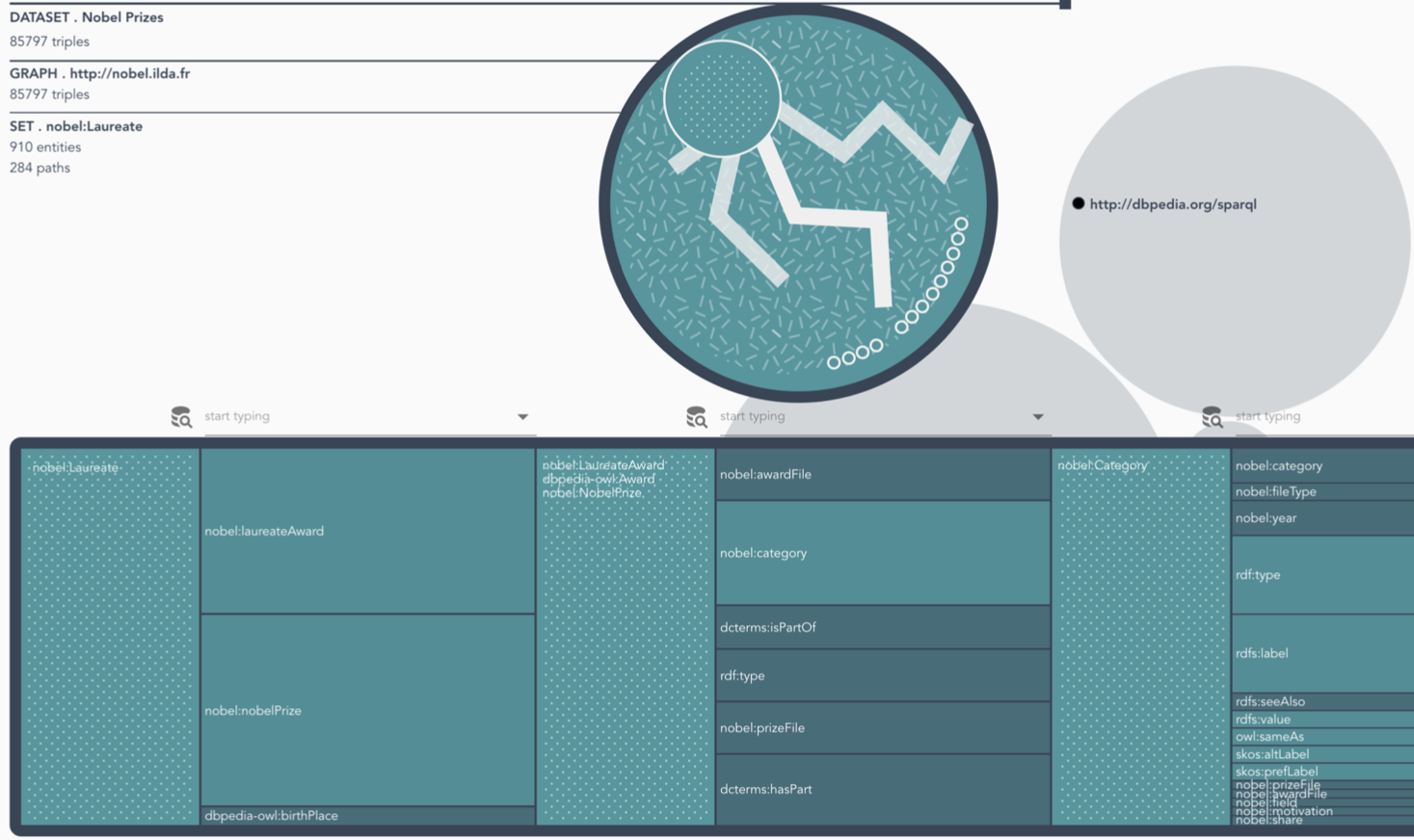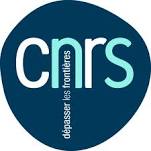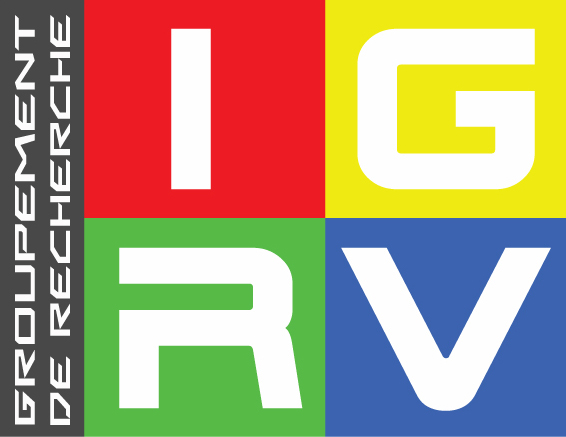Journée Visu 2021
Mardi 8 juin 2021 (9h-16h30), en ligne.
PROGRAMME 2021
- INSCRIPTION gratuite mais obligatoire
| Horaire | Description |
|---|---|
| 9:00 | Introduction de la journée |
| 9:15 |
Keynote:
Anders Ynnerman and Alexander Bock (Linköping
University, Linköping, Suède)
"Exploranation - from the inside of mummies to planets,
stars and galaxies" |
| 10:15 | Pause |
| 10:30 |
Visualisation d'information
|
| 12:10 | Pause déjeuner |
| 13:30 |
Visualisation scientifique
|
| 15:10 | Pause |
| 15:25 |
Panel de prospective
|
| 16:10 | Conclusions de la journée |
KEYNOTE


Title
Exploranation - from the inside of mummies to planets, stars and
galaxies
Abstract
This talk will take its starting point in the on-going convergence
of exploratory and explanatory visualization paradigms into
“Exploranation”. Based on the general availability of processing
power, access to data and ever improving visualization methods,
explanatory visualization can be data driven and fully interactive.
This leads to a paradigm shift in visual learning and communication,
enabling a new generation of installations and demonstrations at
public venues such as museums and science centers. At the same time,
explanatory methods can pave the path for new approaches to
exploration and workflows for domain experts, and also improve
internal team communication. The talk will address the underlying
technical aspects, and use many examples and interactive
demonstrations to illustrate the introduced concepts. As a first
example, direct volumetric rendering of data from scanning
modalities will show human anatomy and function, and how specimens
from collections at museums, such as mummies, insects and flowers,
can be virtually dissected. The talk will then focus on large scale
immersive visualization on dome theaters and discuss interaction in
these environments. The talk will also include a presentation and
live demonstration of how the exploranation concept can be applied
to space research and science communication in space and astronomy
using the OpenSpace software, which is a scalable platform that
paves the path for the next generation of public outreach in
immersive environments such as dome theaters and planetariums. We
will demonstrate features such as: globe browsing which enables
contextualization of extreme resolution imagery of planetary
surfaces, interactive visualization of large star fields e.g. 1
billion stars from the Gaia DR2 data release, and volumetric
rendering of MHD simulations of coronal mass ejections and
operational space weather forecasting. The OpenSpace project builds
on a collaboration between Linköping University, The American Museum
of Natural History, NASA Goddard Space Flight Center, New York
University, University of Utah.
Biographies
Professor Anders Ynnerman received a Ph.D. in physics from
Gothenburg University, Sweden. During the early 90s, he was at
Oxford University, UK, and Vanderbilt University, USA. Since 1999,
he holds the chair in scientific visualization at Linköping
University and is the director of the Norrköping Visualization
Center C. Ynnerman is a member of the Swedish Royal Academy of
Engineering Sciences and the Royal Swedish Academy of Sciences. In
2007 Ynnerman was awarded the Akzo Nobel Science award and in 2010
he received the Swedish Knowledge Award for dissemination of
scientific knowledge to the public. In 2017 he was honored with the
King’s medal for his contributions to science and in 2018 he
received the IEEE VGTC technical achievement award.
Dr. Alexander Bock is currently a lecturer at Linköping
University, Sweden. Prior to this, he has been a research fellow at
the University of Utah and a Moore-Sloan Data Science Fellow with
the Center for Data Science at New York University. He received his
PhD in Visualization and Interaction from Linköping University,
Sweden. In 2015, he was a visiting Research Scholar with the
Community Coordinated Modeling Center at the Goddard Space Flight
Center. He is also the Development Lead on the open-source
Astrovisualization software OpenSpace, developed in collaboration
between Linköping University, the American Museum of Natural
History, NASA, the University of Utah, and New York University. Bock
was awarded 2014 and 2015 with the Best Scientific Visualization
poster and 2017 with the Best Scientific Visualization paper awards
at the IEEE Visualization conference for his work in the field of
Astrovisualization.
La journée annuelle du groupe de travail Visualisation du groupement de recherche informatique géométrique et graphique, réalité virtuelle et visualisation (GdR IG-RV) aura lieu le mardi 8 juin 2021 en visioconférence. Cette journée a pour vocation de rassembler les acteurs académiques et industriels de la communauté française en visualisation, afin d'échanger sur les problématiques et les enjeux actuels et futurs de la visualisation. Cette journée couvre entre autres la visualisation scientifique (SciVis) et la visualisation d'information (InfoVis), appliquées dans de nombreux domaines tels que la simulation numérique, la médecine personnalisée, la cartographie ou encore l'intelligence artificielle.
Appel à contribution
Sont admises des soumissions sur résumé (jusqu'a deux pages), en français ou en anglais, qui présentent des travaux originaux. Il peut s'agir de :
- travaux de recherche finalisés ou en cours, de projets ANR, européens ou autres, de retours d'expériences industriels, etc. Si une vidéo pré-enregistrée existe elle pourra être diffusée pendant la journée
- travaux qui ont été soumis* mais pas acceptés, et qui seront donc présentés dans le but de les améliorer en vue d'une nouvelle soumission ou tout simplement de « valoriser » l'investissement.
- travaux non encore soumis, et qui seront présentés en vue d'avoir un premier retour de la communauté.
Modalités de soumission
Merci de nous faire parvenir votre résumé par e-mail à
maria-jesus.lobo@ign.fr et sarton@unistra.fr avant le
18 mai 2021 à 23h59. Les notifications seront envoyées le
25 mai 2021.
L'e-mail doit comporter:
En titre: Soumission à la journée Visu 2021
En pièce attachée: le fichier PDF de votre soumission (pas de template
spécifique).
Dans le corps de l'e-mail: le format de présentation souhaité (voir
plus bas).
Format de la présentation
Lors de la journée Visu, vous pourrez présenter votre soumission sous trois formes, en français ou en anglais
:
- Présentation orale (en direct ou en pré-enregistrée)
- Poster
- Démonstration
Lors de votre soumission, merci d'indiquer quelle(s) forme(s) de présentation vous choisissez. Vous pouvez combiner jusqu'à deux formes de présentation. Il est possible que nous vous suggérions des modifications en fonction des contraintes de temps et de place. Les soumissions peuvent être rédigées en français ou en anglais et ne sont pas anonymes. Un espace virtuel sera mis à disposition pour les posters et les démonstrations.
Thématique
Les thématiques couvertes par l'appel à contribution sont variées et incluront :
- visualisation scientifique
- visualisation d’information
- visualisation de grandes masses de données et visualisation haute performance
- visualisation pour la médecine personnalisée
- visualisation et intelligence artificielle
- design de visualisation
- visualisation et storytelling
- visualisation in-situ
- visualisation analytique
- perception visuelle et visualisation
- interactions dans un contexte d'analyse visuelle
- évaluation de la visualisation
- couplage simulation / visualisation
- visualisation de données relationnelles (par ex.réseaux sociaux)
- fouille visuelle des données et techniques de navigation dans les entrepôts de données
- architectures client-serveur pour la visualisation de données distantes
- visualisation collaborative (colocalisée ou à distance, synchrone ou asynchrone)
- visualisation sur dispositifs nouveaux (par ex. murs d'écrans, tablettes tactiles, montres intelligentes) et avec des dispositifs d'interaction non conventionnels (par ex. capteurs 3D)
- méthodes topologiques pour la visualisation
- visualisation de données géolocalisées
- visualisation de données biologiques et moléculaires
- visualisation de données incertaines
ORGANISATEURS 2021
ICube, Université de Strasbourg
sarton(at)unistra.fr
LASTIG, Université Gustave Eiffel
maria-jesus.lobo(at)ign.fr
Précédentes Journées Visu
- Journée Visu 2020: 9 juin 2020, Virtuelle
- Journée Visu 2019: 17 mai 2019, Télécom ParisTech, Paris
- Journée Visu 2018: 25 mai 2018, EDF Lab, Palaiseau
- Journée Visu 2017: 7-8 juin 2017, IFP Energies nouvelles, Rueil-Malmaison.
- Journée Visu 2014 : 7 novembre 2014, Télécom ParisTech, Paris
- Journée Visu 2013 : 6 novembre 2013, Institut de Biologie Physico-Chimique, Paris
- Journée Visu 2012: 25 septembre 2012, Télécom ParisTech, Paris
- Journée Visu 2011: 12 octobre 2011, CEA, Bruyères-le-Châtel
- Journée Visu 2010: 5 octobre 2010, EDF, Clamart
